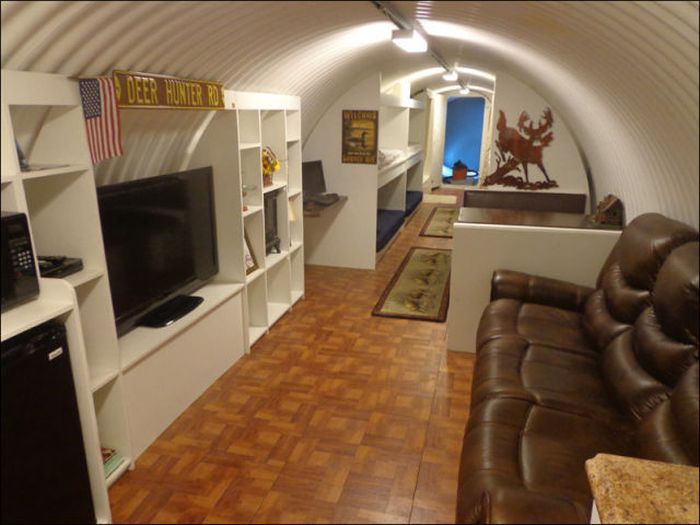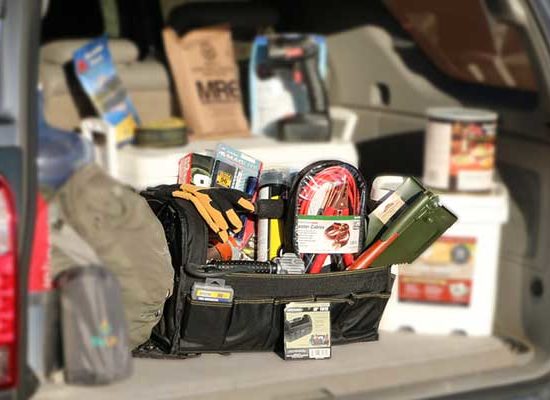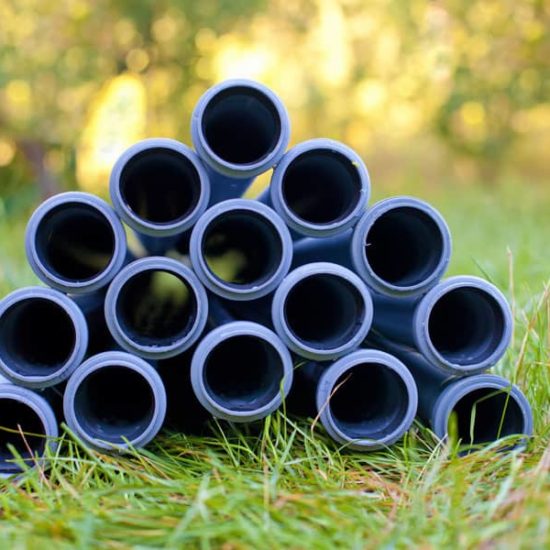
Although modern emergency infrastructure can handle most small emergencies, the system can quickly break down when faced with large-scale natural disasters and human-induced catastrophic events. The result can be a loss of most basic services that our daily lives rely on – running water, access to food at the store, emergency medical and fire services, and communication networks. When you are left without these elements that hold our society together, having a plan in place for protecting yourself and your family can be the difference between surviving through the catastrophe and not.
One of the most important things you will need to decide ahead of or at the outset of any disaster is whether you will bug in vs bug out – shelter in place or evacuate. While there are times when bugging out is necessary, and potentially advantageous, bugging in is the preferred choice in most cases. Critically, bugging in requires a significant amount of preparation work in order to ensure you will have everything you need to survive when the time comes. This is where a bugging in checklist can come in handy – knowing what you need to prepare for and how you will organize your shelter can go a long way towards helping you and your family move efficiently and safely when the time comes.
This guide will help you prepare that checklist by covering everything you need to consider in your bugging in plan. From choosing, organizing, and securing a shelter hub, to ensuring access to food and water, to preparing backup plans when bugging out becomes a necessary choice, this guide will help prepare you and your family to bug in during a major emergency.
5 Reasons why Preppers Should Bug In First?
Within the prepping community, a huge amount of attention and resources are geared towards bugging out. However, bugging out should only be the survival mode of choice when bugging in is untenable. The reason is that there are numerous advantages to bugging in.
1) Built-in shelter
One of the major advantages to bugging in during an emergency is that you already have one of the essential survival components built into your plan – shelter. Compared to sleeping outside, even in a tent, your home is dry, insulated, and relatively spacious. Your home can also be much more secure than sleeping outside since the doors and windows can be locked and even boarded against potential intruders. Plus, in the worst-case scenario of someone entering your home, you and your family will be familiar with escape routes and hiding places to help you stay safe.
2) Neighborhood community
Another advantage to sticking around your home is that you have a built-in community. Chances are high that you will recognize your neighbors, which allows you to begin discriminating between people who you expect outside your home and potential intruders. In addition, if you have neighbors who are also bugging in, you can band together to share information and resources – and even develop a rotating neighborhood watch to provide collective security.
3) Local knowledge
Knowing your local surroundings – your town and region – can also be an important advantage in the event that you need to venture outside your home. Scavenging for food, water, gasoline, or other supplies will be much simpler if you have an idea of where stores and potentially abandoned homes are located. Plus, in the event that you do need to bug out after days or weeks of sheltering in place, you will have an idea of what roads lead where, where lesser-known trails are located, and what the topography of the region is like.
4) Supplies
When bugging out, you are limited to the supplies you can carry on your back. In contrast, bugging in allows you to stockpile essentially limitless amounts of food and water – which you’ll also use less of since you will not need to expend energy moving around with heavy packs. Additionally, your home is likely to be filled with potentially useful tools and supplies that you would never be able to include in a bug out bag. Having access to a diversity of household items opens up possibilities for improvising solutions as problems arise.

5) Being found
Although it might not be a priority at the outset of an emergency, being found – by friends, families, and emergency responders – can be critical as a disaster winds down. Typically, your home is the first place that people will go looking for you to reconnect or to provide emergency aid.
8 Steps to Prepare to Bug In
Preparations for bugging in need to begin long before an emergency. Your family should have a plan, discussed ahead of time, that describes where everyone will meet and what they will bring with them. In addition, your bug in hub should be pre-stocked with non-perishable food and at least several days’ worth of water, as well as basic emergency supplies like a portable radio, medical kit, and a flashlight.
As soon as you receive warning of an emergency, it is time to put your bug in plan into action. Check first for official emergency communications over your radio or, if they are still functioning, your television or phone. If there is an evacuation notice for your area and you are still able to leave, follow it – this is a situation when bugging in has been determined by authorities to be more dangerous than bugging out. Otherwise, as long as there is still electricity and running water, begin charging all battery-powered electronics, fill your bathtubs with water (these work best), and gather your family in your bug in the hub.
1) Choosing and Organizing Your Shelter
One of the most basic elements to your bug in checklist should be where in your home you will be bugging in. Keeping your entire house running in an emergency is not only an inefficient use of limited resources but also reduces your security. Choose a single room or a set of connected rooms that will serve as your hub throughout the disaster period – this hub will be where your efforts to maintain heating, light, and sanitation will be focused.
Your bug in hub should be an above-ground room – on an upper floor if your area is prone to flooding – that can be fully enclosed by doors and has few or no windows. The room should be large enough to comfortably fit your entire family, along with sleeping bags and daily food and water supplies. The room that you choose should also be able to accommodate a non-electric heater. While a living room with a fireplace can be a good choice for some emergencies, any disaster involving airborne chemicals or radiological debris will require a room that can be more easily sealed off from the outside world.
If your hub room has a closet, this is an ideal space to store food and water, as well as any other emergency supplies you will need with you while bugging in. Otherwise, keep one to two days’ worth of food and water in your hub room at a time and use an adjoining room for your larger stockpile of emergency supplies. Ideally, these supplies should be stockpiled and kept in the hub room well ahead of a disaster and your family should know to use them only in case of an emergency.
2) Ensuring Access to Water
Water is one of the most difficult parts of any survival plan since it is heavy and bulky, while at the same time going without it for as little as three days will be fatal. The availability of water sources will depend in large part on the nature of the emergency happening outside, so the most versatile plan for ensuring access to water is simply to stockpile it in your house ahead of time. A good rule of thumb is to store one gallon of water per person per day, which can be used for both drinking and sanitation.
Although you can purchase bottled water ahead of an emergency, purchasing tens of gallons of water can quickly become expensive. Instead, simply fill specifically designed water storage containers and develop a plan to rotate the water about every 6 months (as recommended by FEMA).
Another option for storing large volumes of water is to install a rain barrel. Although this approach takes more time up front, collecting rainwater is one of the best ways to keep regenerating your water supplies while you are bugging in. Note that rainwater will need to be chemically treated or filtered before drinking it, so you will need to keep water purification supplies in your emergency kit.
3) Planning for Emergency Food Supplies
While your family can go longer without food than without water, planning for how you will feed multiple people while sheltering through a disaster is an important part of your bugging in plan. Since you are not likely to have access to your normal kitchen appliances, keep your food plan simple and rely primarily on non-perishable ingredients that store well for long periods.
Freeze dried foods and backpack meals are all excellent food choices if you have access to hot water. This is a major reason to keep a backpacking stove (good option) and plenty of stove fuel with your emergency supplies. Coffee, tea, and hot chocolate can provide a welcome morale boost and help keep your body warm when it gets cold in your shelter hub.
When possible, start out by eating whatever perishable food you were keeping in your refrigerator, freezer, and pantry. This will help lengthen the overall time your food supplies will last, as well as put food that will otherwise spoil to good use.
4) Keeping Your Shelter Warm and Lit
Without electricity, whichever room your family is sheltering in will be without heat and without overhead lights. However, coming prepared with a non-electric heater and portable lights can make your hub significantly more comfortable and save you from burning through excess calories to keep yourself warm.
If the room you are sheltering in has a fireplace and you have wood to burn, using an open fire to heat your shelter is a viable option. However, purchasing a propane- or kerosene-burning heater offers much more versatility and heating efficiency (but make sure there is a way to vent the heater appropriately). Both propane and kerosene are easily obtained ahead of a disaster and store for years without going stale. As a rule of thumb, plan on storing enough fuel to run your heater for at least 30 hours – the best way to determine how much fuel this requires is to run the heater ahead of time, which also allows you to ensure that it is powerful enough to heat the entire room.
Once you have a heat source, the next step in keeping your shelter warm will be to insulate it. First, seal off your bug in room as much as possible and minimize the number of times that people are entering and exiting the room. Use blankets and towels to seal cracks underneath doors and drape them over windows – in addition to closing the blinds – to add insulation.
In order to reduce heat loss from your own body, it is essential to wear multiple layers of clothing – when possible, you should wear as much clothing as it takes to feel warm. Common areas of heat loss from the body are the feet, neck, and head, so be sure to include socks, a scarf, and a thick hat in your outfit. Also, make sure that everyone in your family has heavy blankets or a warm sleeping bag at night. Knowing where all of these items are in your house before a disaster strikes – or simply storing them in your designated shelter room – is a critical part of your emergency preparedness plan.
Having a portable lighting solution for your shelter room will also make your entire experience easier and more comfortable, as well as reduce the chance of getting injured from stumbling around in the dark. Each person in your family should have a flashlight or headlamp, while you can keep a bright camping lantern in your emergency supplies to provide a central light for the room. While candles can add both light and warmth to your shelter room, note that they also pose a potential fire hazard.
5) Dealing with Sanitation
Sanitation is not usually at the top of the list of concerns in a wide-ranging disaster, but when the septic system stops working it can suddenly be a serious issue. Unfortunately, without running water or power to the pumps that keep septic systems flowing, disposing of human waste from your house can be much more difficult than simply flushing the toilet.
The solution is relatively simple if your house has an individual septic system with its own septic tank in the yard. In this case, you can simply use water (ideally, water from the bathtubs that you filled before the water stopped running) to manually refill your toilet’s tank, then flush as normal. This solution also works if you are certain your town’s municipal septic line is operating, although there is no way to tell without potentially allowing sewage to back-flow into your home if the main septic line is not being pumped.
If it is possible to go outside, then digging a latrine is also an option. For individual use, you will want to dig a hole that is at least six inches deep – although if multiple people will be using this hole for days on end, you will want to go much deeper than that. Be sure to dig your hole at least 200 feet from any water sources.
Unfortunately, going outside won’t be possible in most emergency situations, so you need to deal with waste inside your home when flushing isn’t an option. Remove as much water as you can from the toilet, then line it with two black garbage bags (one inside the other, in case of a rip) and use the toilet seat to keep the bags open. After using the toilet, add cat litter to the bag to reduce the odor. When the bag is about two-thirds filled, add a small amount of bleach if you have it, close the bag securely, and then place it into a garbage can or into your garage to deal with after the emergency is over.
6) Securing Your Shelter
In a prolonged disaster situation, security against looters and desperate people is a real concern. While it is not necessary to go overboard with security, it is important to stay vigilant and take precautions to not attract attention to your home. It is typically good practice to keep lights off at night and to ensure the windows are blacked out when moving around with flashlights so as not to attract attention from people passing by at night. In addition, if you have neighbors who also sheltered in place, talk to them about whether they have seen unexpected people in your neighborhood and consider working together to establish a night watch for the neighborhood. While you do not want to damage your home, consider ways to give your home the appearance of having been ransacked already can also dissuade potential intruders from thinking there are things worth stealing inside. A messy appearance during a disaster will blend in more than a nicely maintained exterior.
7) Raising Morale and Fitness
The importance of keeping morale up while weathering a disaster cannot be understated since your outlook drastically affects your ingenuity when solving problems and your ability to think clearly as the situation evolves. Adding foods that are a treat for you and your family, as well as a deck of cards or a board game, into your emergency stores can go a long way towards keeping spirits up. In addition, keeping busy with specific goals like finding additional food and water or bulking up your shelter’s security can give everyone a sense of purpose.
Staying fit is also an important consideration, especially if you will be limited to staying within your shelter room for days on end. Maintaining fitness not only increases morale but can also be important to your survival if you need to bug out or defend your shelter. There is a wide range of cardiovascular and muscle-building exercises that can be done without any specialized equipment and using only your body weight that will help you stay in good shape.
8) Having a Backup Bug Out Plan
Even after you have committed to bugging in, and even if you have plenty of supplies to last your family for weeks to come, it is important to remain prepared to bug out in case the situation outside your shelter changes. Check out this Guide to Bugging Out here. If an intruder gets into your home or the disaster escalates to a point where sheltering in place is no longer safe, you will need to be able to take a limited set of supplies and escape quickly. This backup bug out plan may or may not be the same as your original bug out plan since it is likely that your car will no longer start or that roads are impassable. Having a portable radio or another method of receiving communications from the outside world can go a long way towards making the decision to bug out or remain in place and help inform your plan in case bugging out is required.
Bugging In Should Be Your First Choice
When a disaster strikes, bugging in is often a safer and more comfortable option for you and your family than bugging out. Although your home may lose most of its modern amenities without electricity, running water, or heat, simply having a shelter pre-stocked with emergency supplies can make a huge difference in weathering a catastrophe. However, bugging in requires careful planning ahead of time to ensure that you have the supplies you need, where you need them. Hopefully, our guide gets things started for you and your family to prepare for bugging in!




















